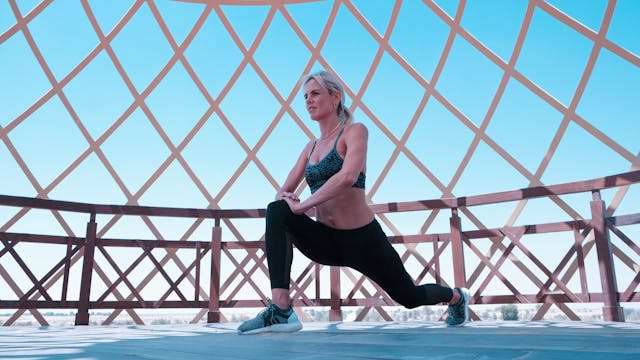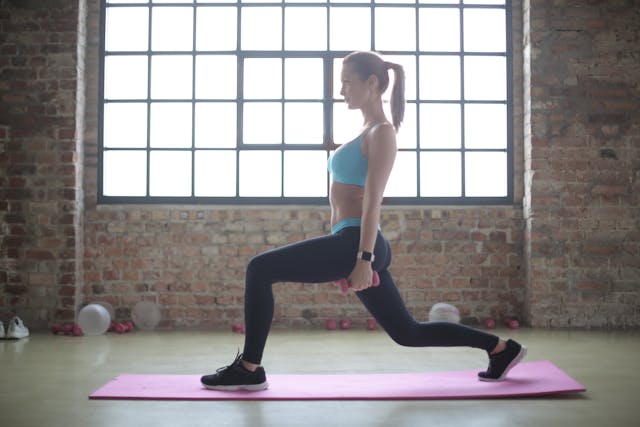Glutes exercise is one of the most important workouts routines. We explore what is glutes exercise and health benefits that brings to our body. Further, we give you different types of glutes workout and some valuable tips of how to grow your glutes efficiently.
Table of Content:
What is Glutes?
Building and maintaining strong glute muscles is essential not just for aesthetic reasons but also for overall health and fitness. The gluteal muscles—comprising the gluteus maximus, gluteus medius, and gluteus minimus—play a pivotal role in many physical activities, including walking, running, jumping, and lifting. Strong glutes can improve athletic performance, help prevent injuries, and contribute to better posture and spinal stability. Incorporating effective glute exercises into your workout routine is essential for enhancing strength, balance, and mobility.
Glutes Workout Benefits
One of the primary benefits of exercising the glutes is improved athletic performance. The glute muscles are powerful and generate force for explosive movements such as sprints, jumps, and heavy lifts. Athletes, particularly those in sports requiring speed and agility, often focus on glute development to gain a competitive edge. Strong glutes not only increase speed and power but also provide better stability during lateral movements, reducing the risk of injuries such as ankle sprains and knee ligament tears.
In addition to boosting athletic performance, strong glutes help support proper posture and alleviate back pain. The glute muscles stabilize the pelvis and help maintain an upright posture by preventing anterior pelvic tilt, a condition where the pelvis tilts forward, causing an exaggerated arch in the lower back. Weak glutes often force the lower back to compensate, leading to muscle strain and chronic pain. By strengthening the glutes, individuals can reduce the load on their lower back and enhance overall spinal health.
Preventing injuries is another significant reason to prioritize glute exercises. Weak or underdeveloped glutes can result in muscular imbalances, affecting the alignment and functioning of other body parts. For instance, insufficient glute strength can lead to knee pain, as the quadriceps and hamstrings become overworked to compensate. Strengthening the glutes improves the alignment of the hips, knees, and ankles, thereby minimizing the risk of injuries during physical activities.
Exercises for Glutes
Effective glute exercises come in various forms, including bodyweight movements, resistance training, and functional exercises. One of the most fundamental and effective glute exercises is the squat. When performed correctly, squats engage all three glute muscles, along with other lower body muscles like the quadriceps and hamstrings. To maximize glute activation, it is essential to maintain proper form by keeping the chest lifted, knees aligned with the toes, and hips pushed back.

Lunges are another excellent exercise for targeting the glutes. They also engage the quadriceps and hamstrings, making them a comprehensive lower-body workout. Forward, reverse, and lateral lunges all work the glutes from different angles, promoting balanced muscle development. Adding weights, such as dumbbells or kettlebells, can increase the intensity and further engage the glute muscles.
Hip thrusts are particularly effective for isolating and strengthening the gluteus maximus. This exercise involves sitting on the floor with the upper back resting against a bench, feet flat on the ground, and knees bent. By driving the hips upward and squeezing the glutes at the top, you achieve a full range of motion that targets the glute muscles. Adding a barbell across the hips can increase resistance and further enhance muscle activation.
Incorporating resistance bands into glute workouts is an excellent way to increase intensity and target the gluteus medius and minimus. Exercises such as lateral band walks, clamshells, and standing kickbacks effectively engage these smaller glute muscles. Resistance bands provide constant tension, making the exercises more challenging and effective for muscle growth.
Glutes Without Equipment
For those looking to improve glute strength without equipment, bodyweight exercises like glute bridges and donkey kicks are highly effective. Glute bridges involve lying on your back with knees bent and feet flat on the floor. By lifting the hips and squeezing the glutes, you activate and strengthen the glute muscles. Donkey kicks are performed on all fours by lifting one leg backward and upward while keeping the knee bent, which targets the glutes and enhances stability.
Tips to Grow Glutes
When planning a glute-focused workout routine, it is essential to consider the principles of progressive overload and variation. Progressive overload involves gradually increasing the resistance or intensity of exercises to stimulate muscle growth and strength gains. This can be achieved by adding more weight, increasing the number of repetitions, or reducing rest time between sets. Variation, on the other hand, prevents workout plateaus and ensures that all glute muscles are effectively engaged. Including a mix of exercises that target different angles and muscle fibers will yield the best results.
Recovery and proper nutrition are equally important for building strong glutes. After an intense workout, the muscles need time to repair and grow stronger. Incorporating rest days and practices such as stretching and foam rolling can help alleviate muscle soreness and improve flexibility. Additionally, consuming a balanced diet rich in protein, healthy fats, and complex carbohydrates provides the nutrients needed for muscle repair and growth.

Another crucial aspect of glute training is mind-muscle connection. Focusing on the contraction and engagement of the glute muscles during exercises can significantly enhance their effectiveness. Many individuals unknowingly rely on other muscles, such as the lower back or quads, during glute exercises. By concentrating on squeezing the glutes and maintaining proper form, you can ensure that the intended muscles are being targeted.
Consistency is key when it comes to glute training. While occasional workouts may yield minimal results, a consistent and well-structured routine will lead to noticeable improvements over time. Aim to incorporate glute exercises into your workout schedule at least two to three times per week, with a combination of heavy resistance training and bodyweight movements.
The Bottom Line
So, strong glutes are essential for physical performance, injury prevention, and overall health. Incorporating a variety of exercises that target all three glute muscles can lead to improved strength, stability, and posture. By maintaining proper form, progressively increasing intensity, and focusing on recovery, individuals can achieve well-developed and functional glute muscles. Whether your goal is to enhance athletic performance, alleviate back pain, or simply build a stronger lower body, glutes exercise is a vital component of any fitness routine.


